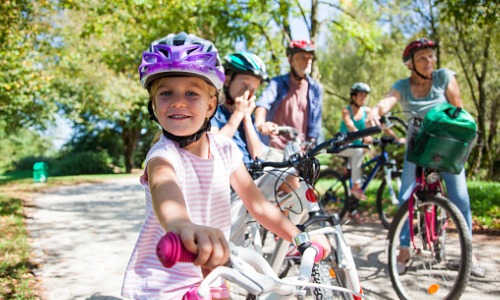Once your kids are teenagers, they should be big enough to ride alone or supervise their younger siblings on rides together. By adolescence, they can ride their bike to school or a summer job.
But even careful kids can be at risk for accidents or injuries, so set boundaries for where they can and can’t go. For example, tell them to stay within a 10-mile radius or only ride during certain times.
And just like adults, teens need to follow basic bike safety rules and wear a bicycle helmet, use reflectors and lights, wear bright colors, and follow traffic rules.
Make sure they know how to use the bike lane and when to cross busy crosswalks for longer rides. Remind them that they can get off their bikes and walk across the street in cases where they don’t feel safe riding in a busy intersection.
And while your teen may be too old for GPS trackers, their bike isn’t immune to theft. Adding a tracker to their bike along with a bike lock can keep their ride safe from getting swiped and make it easier to find if there is trouble.





